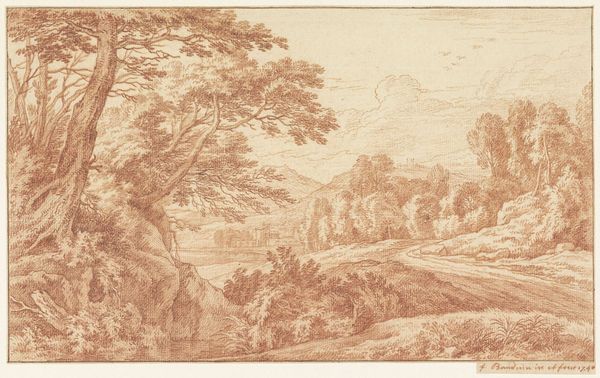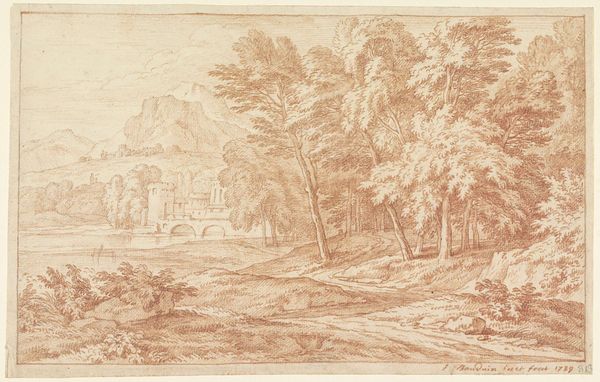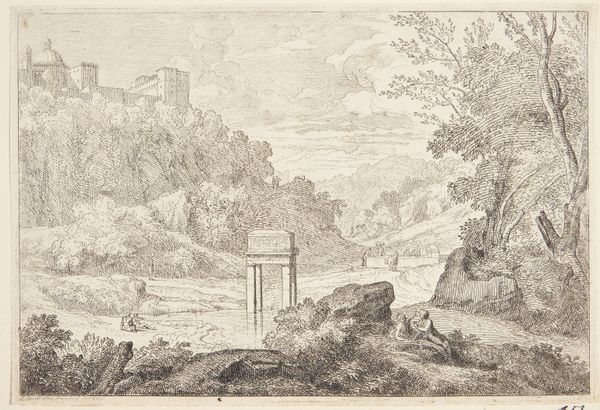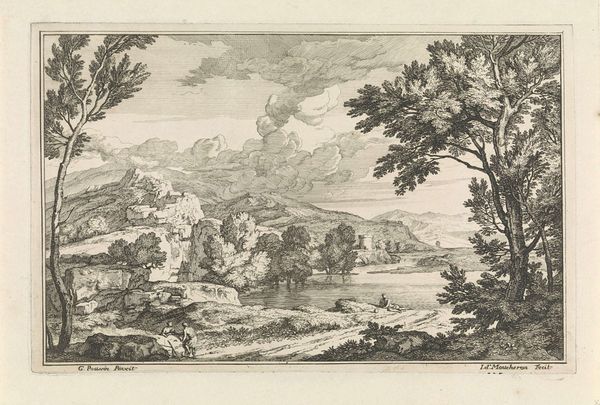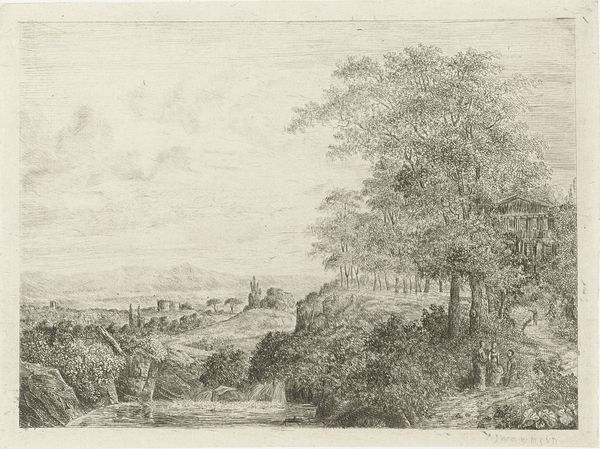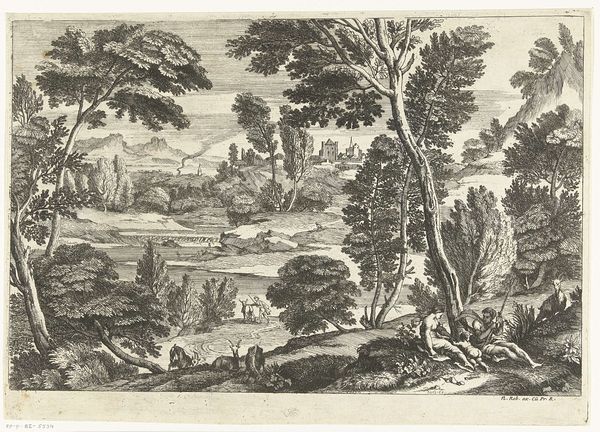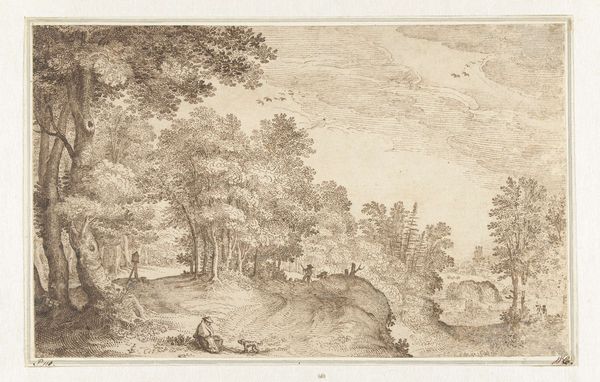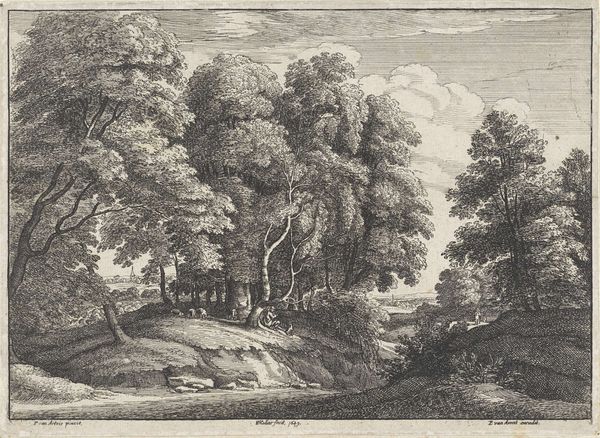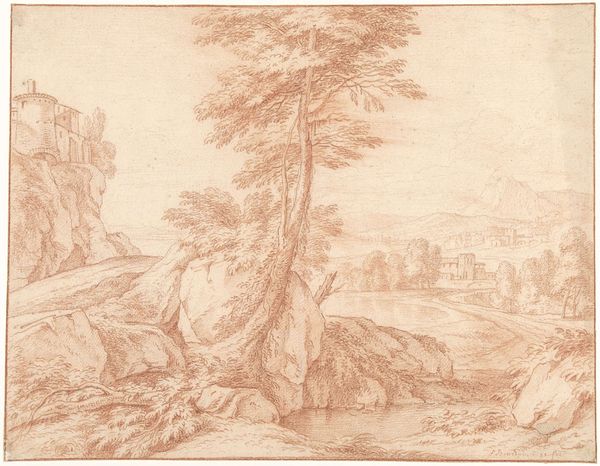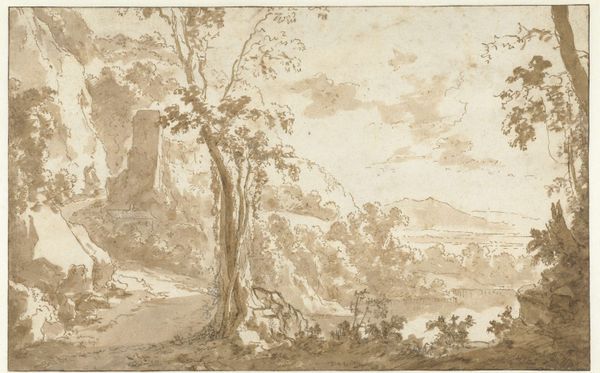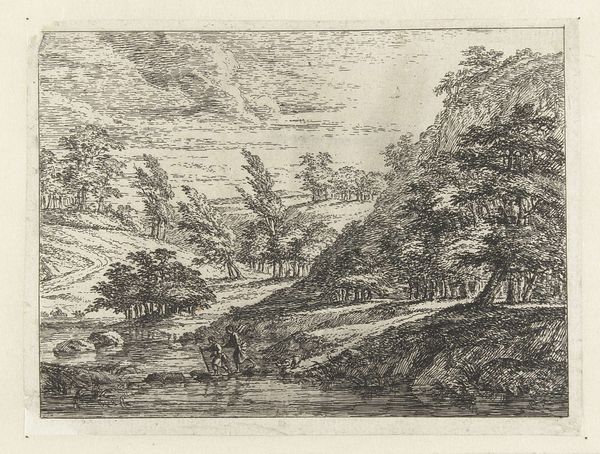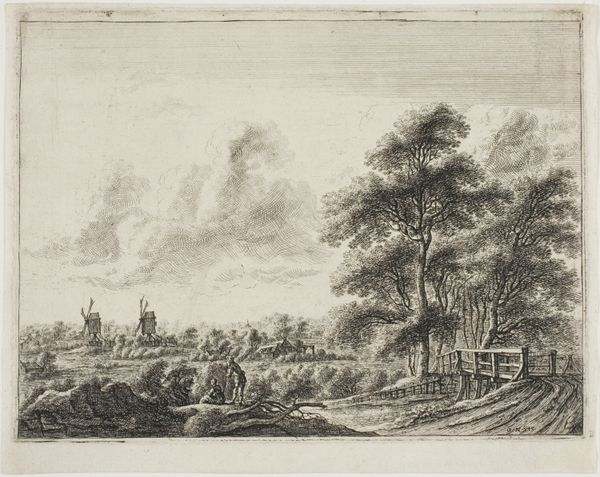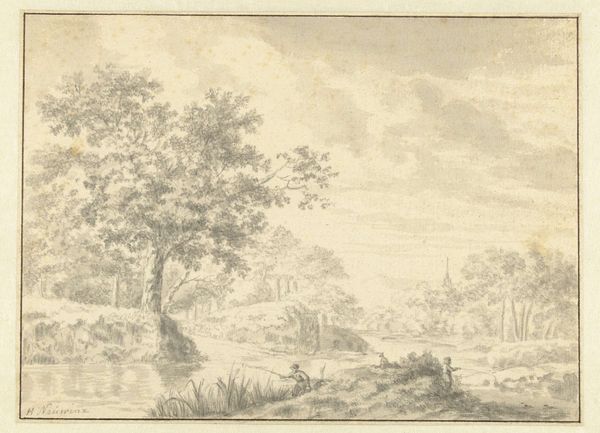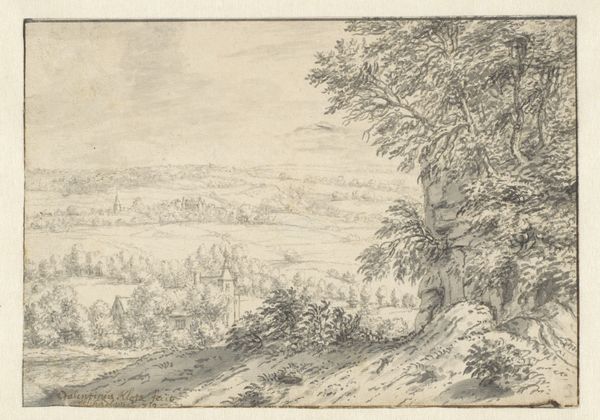
etching
#
baroque
#
etching
#
landscape
#
etching
#
form
#
line
#
realism
Dimensions: height 183 mm, width 302 mm
Copyright: Rijks Museum: Open Domain
Curator: This is "Arcadian Landscape with Ruin" etched by Frans Boudewijns in 1738. Editor: It feels melancholic, almost sepia-toned even though it's just a single color. The density of lines creates a lot of subtle variations, making a cohesive texture across the landscape. Curator: The "Arcadian Landscape" evokes the classical ideal. Ruins serve as a visual reminder of time's passage, adding a layer of contemplation. Landscape in this era reflects not just the natural world, but a cultured vision of the world. Editor: The composition is intriguing. Our gaze is led horizontally, then into depth as we move across water. Boudewijns's layering of shapes gives structure and depth to the natural forms. Note how line mimics form throughout – how effectively line mimics ripples, leaves, the lay of fields and rock. Curator: The ruined structure acts as a symbol, carrying a heavier symbolic weight beyond mere aesthetics. It connects to concepts of decline, the ephemerality of earthly power and the ever presence of nature, a Vanitas concept expressed not with skulls but architecture in decline. Editor: The use of a singular color simplifies and strengthens the image; notice that simplification serves the details. It's intriguing how Boudewijns balanced the realism of representation with his Baroque aesthetics and conventions of drawing and perspective. Curator: These images reinforced an aristocratic yearning for a pastoral simplicity, ironically amongst those who enjoyed anything BUT a simple life! It reveals an internal, and probably unconscious desire to commune with what had already vanished from the European aristocracy. Editor: Yes, in analyzing its formal components and realizing their interrelation, it comes down to that: that this is more than just a picturesque depiction; it embodies and gives structure to deep psychological and cultural dynamics. Curator: An excellent insight; one must look beyond mere representation to see the enduring dialogue that Frans Boudewijns established here with time itself. Editor: Indeed, observing the form here really unlocks its meaning for us today.
Comments
No comments
Be the first to comment and join the conversation on the ultimate creative platform.
